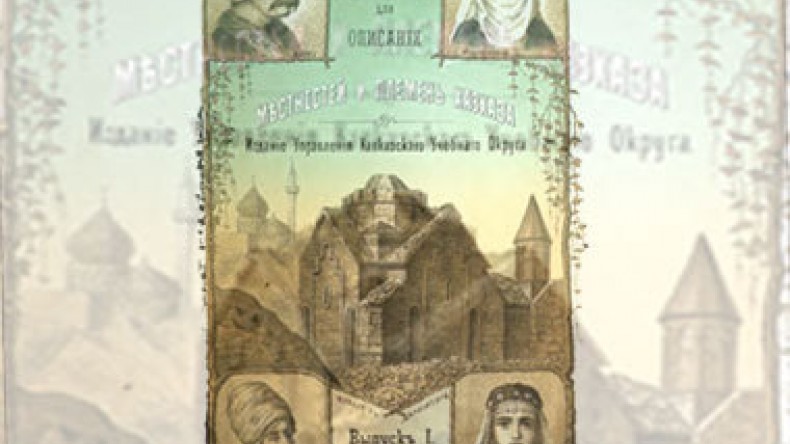
19th century scientific edition of Russian Empire compiled historical data about ancient Erivan
The first edition (1881) of “The Collection of the Materials to Describe the Terrain and Tribes in the Caucasus” started publication of the results of the Caucasus region research with an article dedicated to Yerevan. According to it, the references about the Armenian city Yerevan date back to the 7th century, while the Turkic and Persian peoples appeared in the city only in the 15th century. The article was written by Stepan Pavlovich Zelinski, a teacher of preparatory classes in the Erivan progymnasium.
The article starts with the discussion and analysis of the etymology of the name of the city, Erivan. The author scrupulously presents all the versions, from urban legends to data based on historical documents and sources. According to the Armenian legend, having a look from the top of Ararat, the first thing that Noah saw, were Erivan uplands that had come out of the water earlier than the other things. He said, “Erevum e” (“I can see it”). The “Tatar” version links the name of the city Yerevan to the word “aya-ravan,” meaning “it flows” in Persian.
The author also refers to sources where Yerevan was first mentioned. He writes, “The oldest pieces of information about Erivan date back to the second half of the 7th century AD when a war was underway, according to Catholicos Ohannes.” In a letter, the Catholicos writes that there was a war in the city of Erivan between 661 and 665, during Patriarch Anastas.
As earlier references about Yerevan, the author cites the Armenian historians of the early 7th century, Movses Khorenatsi and Sebeos. Citing the latter, Zelinski writes, “During the reign of the Greek King Constantine and the Persian Hazkert, the Ishmaelites came and gathered in Yerevan after destroying several places, and sieged a fortress here but could not take it.”
Further, reviewing various versions on the origin of the toponym of Yerevan, Zelinski concludes that “… there can be no doubt that Erivan existed even before the 7th century for in 661 it was already called a city” and that “there already existed a fortress in Erivan by 635-638.”
Summing up the excursus of the “pre-Turkic” and “pre-Persian” history of the city, the author notes, “it is for certain that Erivan was under the Armenians’ control till 1441, and since then it became, as it were, a toy in the hands of the Persians and Turks.”
“The Collection of the Materials to Describe the Terrain and Tribes in the Caucasus” is a large-scale publication of narrative sources carried out by the management of the Caucasus Educational Okrug in 1881-1908. It includes researches and description of the history, life, way of life and ethnographic characteristics of the peoples inhabiting the Caucasus region of the Russian Empire.
The primary purpose of publishing “The Collection” was to “find means” to contribute to the spiritual life of the teachers and prevent their degradation. “Without such a support, even a competent and sufficiently educated young teacher can gradually, without even noticing it, be subjected to the influence of the surroundings and finally turn into a ‘teacher-craftsman’ who does not differ from the villagers around him but for his knowledge of this or that reading and writing,” the foreword of “The Collection” reads.
To that end, a decision was made to assign the teachers to carry out extra researches, that is, to make a comprehensive research of the region each teacher lived and worked in.
In addition, these activities would serve “as a fence for the teachers from apathy, erroneous directions and interests in harmful and extraneous inspirations” and “keep them on the level of the education they got and support their further self-perfection.” It can also result in a practical benefit: it will create an objective description of the region and become a source of huge information for the description of the region. A fortiori, there was already a similar positive experience of gathering materials about Kuban and Stavropol in 1879.
As a help, a list of questions of interest is offered to the researchers, including history, economics, statistics, demography, ethnography of the settlements under research, as well as bibliography and archive documents on which the research should be based.
Newsfeed
Videos






























